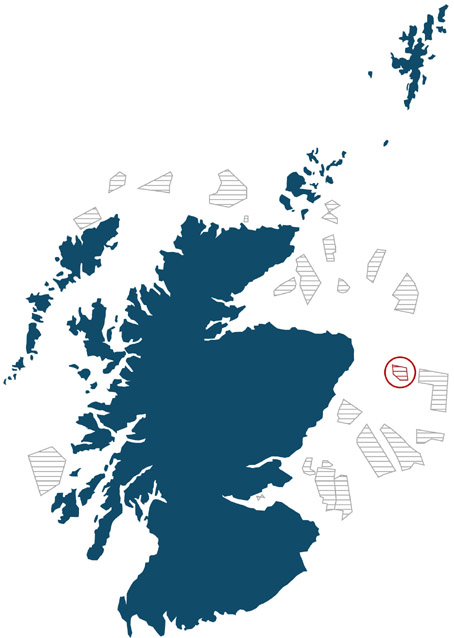The Muir Mhòr Floating Offshore Wind Farm, a joint venture between Vattenfall and Fred. Olsen Seawind, continues to demonstrate its commitment to environmental stewardship through a series of initiatives supporting Scotland’s marine biodiversity.
Muir Mhòr has contributed to the £1.6 million Seabird Resilience Fund, launched by the Scottish Marine Environmental Enhancement Fund (SMEEF). The fund brings together voluntary donations from offshore renewable energy developers to support practical conservation projects that address threats to seabirds, including climate change, invasive species and food scarcity.
Initial funding will support biosecurity surveys on vulnerable island habitats, with further calls for conservation projects expected later this year. Scotland is home to around 60% of the world’s breeding population of Great Skua, as well as significant numbers of Northern Gannet and Manx Shearwater.
Adriaan de Gruijter, Deputy Project Director, Vattenfall, said:
“Scotland’s seabirds are a vital part of our natural heritage and a key indicator of ocean health. Through our contribution to the Seabird Resilience Fund, we’re helping to ensure that clean energy development goes hand-in-hand with nature protection.”
This initiative builds on Vattenfall’s broader commitment to understanding how seabirds interact with offshore wind farms, including the use of radar and camera technology to track flight paths and avoid collisions.
Minke whale study adds marine insight
In addition to its seabird-focused work, the Muir Mhòr team has supported a new study into Minke whale activity in the North Sea. The research aims to better understand the behaviour of these marine mammals in areas near the proposed wind farm site. Insights from the study will help inform future environmental assessments and ensure that offshore developments are compatible with marine conservation goals.
Nature and clean energy working together
The Muir Mhòr project is one of the world’s first commercial-scale floating offshore wind farms. With up to 1GW of power capacity, it will provide electricity for the equivalent of 1.2 million homes once operational, while contributing to Scotland’s ambition to be a global leader in floating offshore wind.
By investing in nature alongside infrastructure, the Muir Mhòr team is helping to build a resilient future for Scotland’s coastal communities and wildlife.

Muir Mhòr Offshore Wind Farm is leveraging decades of industry expertise to deliver one of the world’s first commercially-viable floating wind projects, to leading standards of health and safety.
The site’s deep water conditions are well-suited to floating turbine technology, and its location and size allow for efficient project delivery – utilising nearby ports and mobilising the strong marine supply chain on the east coast of Scotland.
Having been awarded seabed rights in the January 2022 Scotwind auction, the project is in development.
Ecological and environmental survey work is underway both onshore and offshore, and we are working closely with communities in the North East.
Subject to planning and grid infrastructure provision, we are on schedule to generate in 2030 – putting the UK on track to meet its target of 5GW of floating wind by 2030.
About the name
Muir Mhòr, (pronounced ‘moor-vor’) means ‘Great Sea’ in Gaelic – representing the infinite potential for marine-based renewables to harness Scotland’s natural assets of wind and sea and power Scotland’s clean energy future.
 KEYFACT Energy
KEYFACT Energy